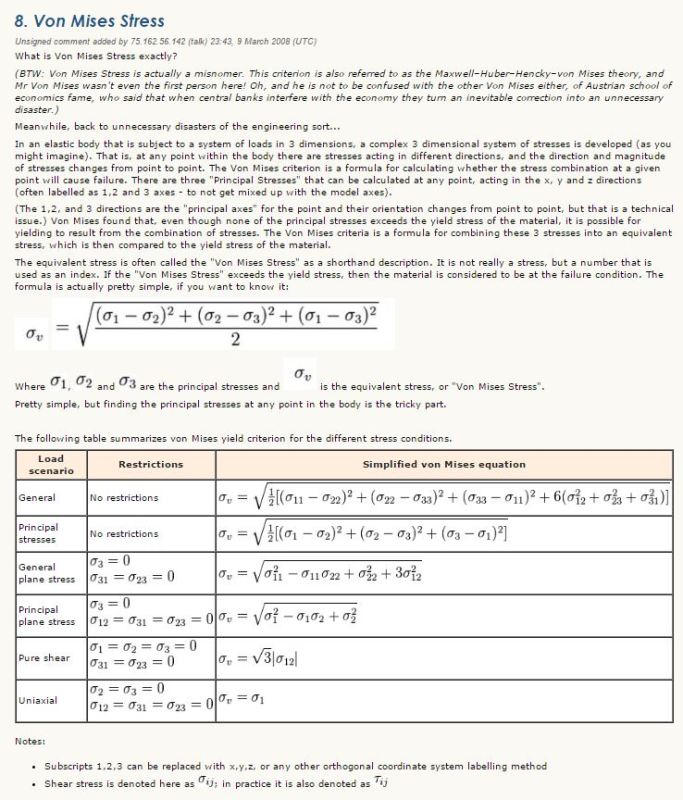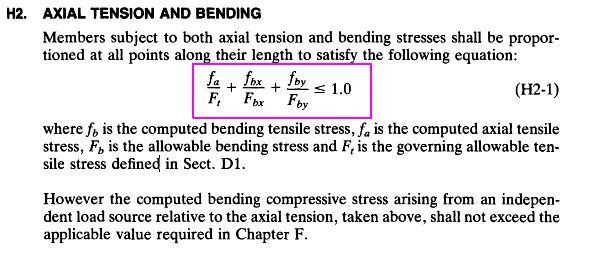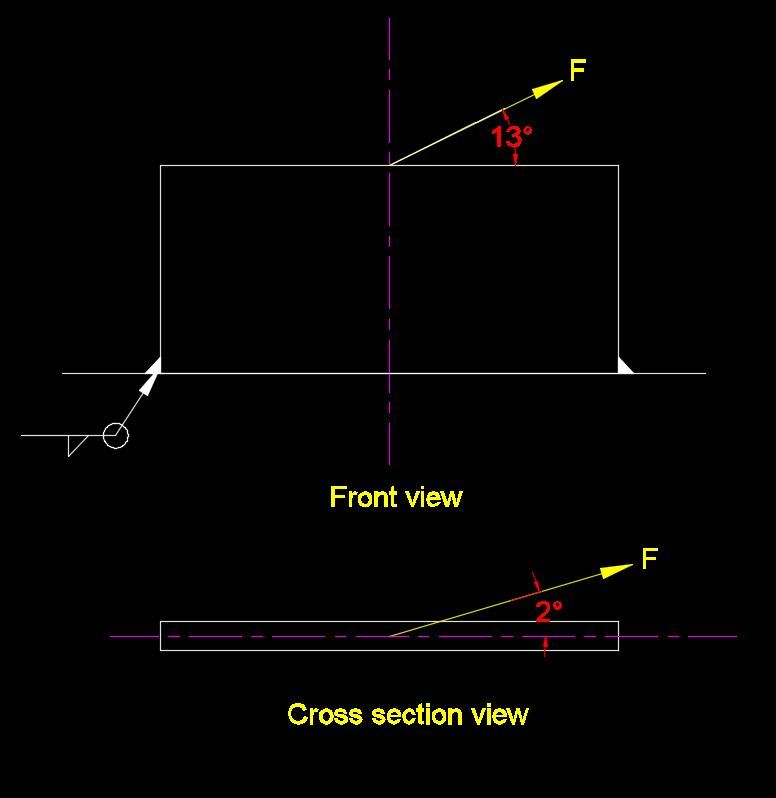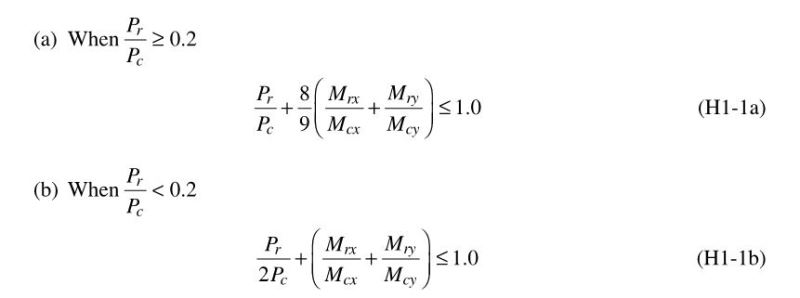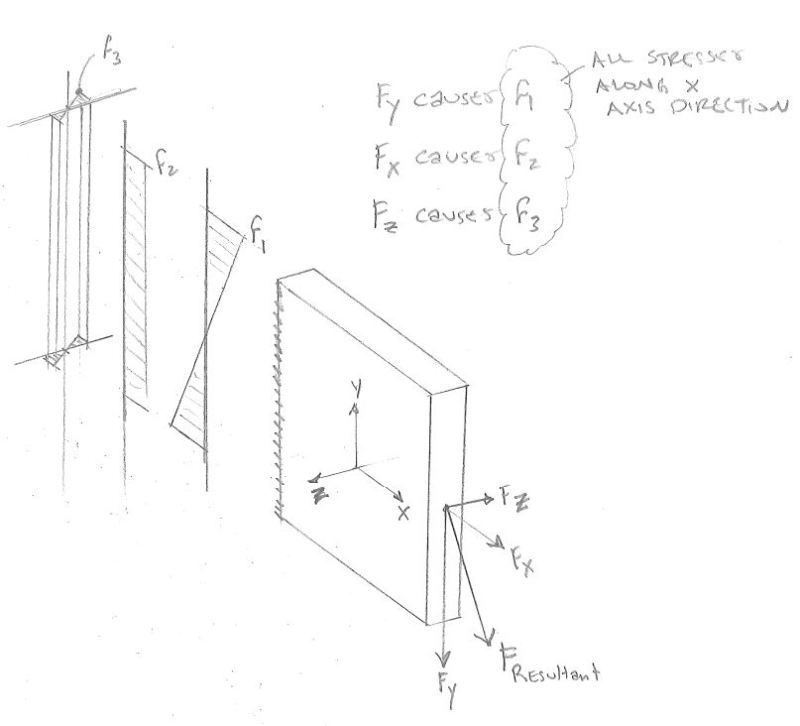MO82
Mechanical
- Jun 7, 2017
- 7
Hello everyone,
I am checking stresses on a rectangular plate (SA-516-70) results from an external load. below is a summary of what I have:
1) Maximum strong axis bending stress is fbx = 15,964 psi, allowable strong axis bending stress= Fbx =0.6 x Fy = 22,800 psi.
2) maximum weak axis bending stress is fby = 5,745 psi, allowable weak axis bending stress = Fby = 0.75 x Fy = 28,500 psi ( the section is compact per AISC 9th edition).
3) Tensile stress = fa= 740 psi (allowable tension = Ft = 0.6 x Fy = 22,800)
now can I say the design is acceptable because:
1) fbx < Fbx
2) fby < Fby
3) fa < Ft
4) fa/ Ft + fbx/Fbx + fby/Fby= 0.93 ≤ 1.0
or I have to find the combined bending stress to check that too separately. if yes, what will be the combined stress and its allowable, will it be √(fbx2 + fby2)= 16,966 or just by adding up fbx + fby = 21,709
Thanks in advance,
Regards,
I am checking stresses on a rectangular plate (SA-516-70) results from an external load. below is a summary of what I have:
1) Maximum strong axis bending stress is fbx = 15,964 psi, allowable strong axis bending stress= Fbx =0.6 x Fy = 22,800 psi.
2) maximum weak axis bending stress is fby = 5,745 psi, allowable weak axis bending stress = Fby = 0.75 x Fy = 28,500 psi ( the section is compact per AISC 9th edition).
3) Tensile stress = fa= 740 psi (allowable tension = Ft = 0.6 x Fy = 22,800)
now can I say the design is acceptable because:
1) fbx < Fbx
2) fby < Fby
3) fa < Ft
4) fa/ Ft + fbx/Fbx + fby/Fby= 0.93 ≤ 1.0
or I have to find the combined bending stress to check that too separately. if yes, what will be the combined stress and its allowable, will it be √(fbx2 + fby2)= 16,966 or just by adding up fbx + fby = 21,709
Thanks in advance,
Regards,

